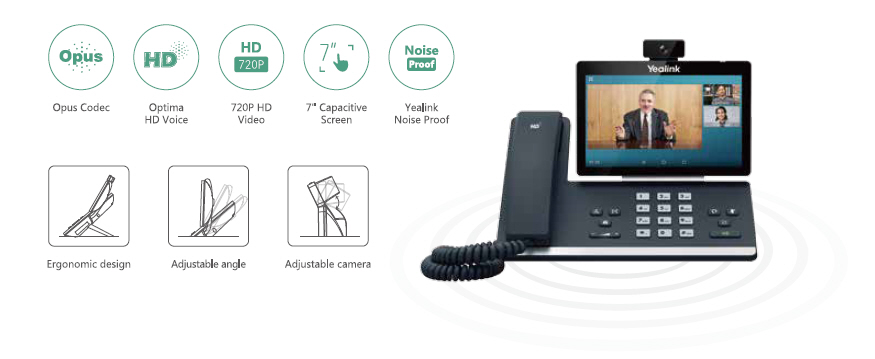Introduction
In today's fast-paced, technology-driven world, communication is key. Businesses and individuals alike are constantly seeking efficient ways to connect with one another. One solution that has gained significant traction in recent years is Voice over Internet Protocol (VoIP) phone systems. But what exactly are VoIP phone systems, and how can you set one up for your own needs? In this comprehensive guide, we will delve into every aspect of VoIP phone systems, ensuring you have all the necessary information to set up your first system successfully.
What Are VoIP Phone Systems?
At its core, a VoIP phone system allows users to make voice calls using the internet instead of traditional telephone lines. This technology converts voice signals into digital data packets and transmits them over the internet, making it a cost-effective and versatile alternative to conventional telephony.
Advantages of Using VoIP Phone Systems
Cost Efficiency: Traditional phone lines can be quite expensive, especially for long-distance calls. With VoIP, you can significantly reduce these costs.
Flexibility: VoIP systems allow you to make calls from anywhere where there is an internet connection, which is invaluable for remote workers.
Advanced Features: Many VoIP providers offer additional features such as voicemail-to-email transcription, video conferencing, and call forwarding at no extra cost.
Scalability: As your business grows, adding new lines or features to a VoIP system is typically simpler than expanding a traditional phone network.
The Components of a VoIP Phone System
Understanding the components that make up a VoIP phone system will help you grasp how they function:
- VoIP Phones: These can be hardware phones designed specifically for VoIP or software-based solutions like apps on smartphones or computers. Internet Connection: A reliable broadband connection is crucial for optimal performance. VoIP Service Provider: Companies that provide the infrastructure necessary for making calls over the internet.
A Beginner’s Guide to Setting Up Your First VoIP Phone System
Setting up your first VoIP phone system may seem daunting at first glance; however, by breaking it down step-by-step, you'll find it's quite manageable. Here’s how you can get started:
Step 1: Assess Your Needs
Before diving into the technical aspects of setting up a VoIP system, it’s essential to evaluate your communication needs.
- How many users will be on the system? What features do you require (e.g., voicemail, call recording)? Do you have a preference for hardware or software phones?
Step 2: Choose Your Internet Connection Wisely
A stable and fast internet connection forms the backbone of any effective VoIP system.
Types of Internet Connections
| Type | Speed Requirement | Pros | Cons | |------------------|-------------------|-------------------------------|-----------------------------| | DSL | Moderate | Widely available | Lower speeds than cable | | Cable | High | Fast speeds | Can slow during peak times | | Fiber Optic | Very High | Extremely fast | Limited availability | | Satellite | Low | Available in remote areas | High latency |
Step 3: Select a Reliable VoIP Provider
Once you've evaluated your needs and ensured solid internet connectivity, it's time to choose a provider. Research various providers based on their pricing plans and included features.
Factors to Consider When Choosing a Provider
Reputation in the industry Customer support options Pricing structure Available featuresVoIP Hardware Requirements
To get started with your new system, you'll need some hardware components:
VoIP Phones
You can opt for either traditional desk phones that support VoIP or softphone applications installed on computers or mobile devices.


Types of Phones
- SIP Phones: Designed specifically for use with SIP-based services. Softphones: Software applications that allow calling through computers or smartphones.
Network Equipment
Ensure your network equipment can handle increased traffic due to voice data transmissions:
Routers Switches FirewallsConfiguring Your VoIP Phone System
Now comes the fun part—setting everything up! Follow these steps:
Step 1: Connect Your Devices
Plug in the power supply for your phones and connect them to your router via Ethernet cables if you're using hardwired devices.
Step 2: Log Into Your Router Settings
Access your router's settings through its IP address (typically found on the back). Ensure Quality of Service (QoS) settings prioritize voice traffic.
Step 3: Register Your Phones with Your Provider
Each device must register with your chosen service provider using credentials provided during setup.
Implementing Security Measures in Your VoIP System
Security is critical; without adequate safeguards, your communication could be vulnerable to attacks.
Best Practices for Securing Your System
Change default passwords regularly. Use encryption protocols such as SRTP (Secure Real-Time Transport Protocol). Enable firewalls specifically designed for voice traffic.FAQs About Setting Up Your First VoIP Phone System
Q1: What do I need before setting up my first VoIP phone system?
A1: Ensure you have a reliable high-speed internet connection, select suitable hardware (phones), and choose an appropriate service provider based on your needs.
Q2: Can I use my existing phones?
A2: Yes! If they are compatible SIP-enabled devices or if you utilize softphone applications on other devices like computers or smartphones.
Q3: Is there any contract involved with most providers?
A3: Many providers offer both contract-based and pay-as-you-go plans; check each plan's stipulations before signing up.
Q4: Can I keep my existing number when switching?
A4: Most providers facilitate number porting so that you can maintain continuity without changing contact details.

Q5: How do I troubleshoot common issues?
A5: Common problems include poor call quality or dropped calls; ensure bandwidth isn’t being used heavily by other applications during calls and verify QoS settings are prioritized correctly within your router configuration.
Q6: What's the difference between hosted vs self-hosted systems?
A6: Hosted solutions mean the provider manages everything remotely; self-hosted systems require local management but offer more customization options at potentially higher maintenance costs.
Conclusion
In conclusion, navigating through “A Beginner’s Guide to Setting Up Your First VoIP Phone System” doesn’t have to feel overwhelming when broken down into manageable steps. By assessing needs thoroughly before selection processes begin—pairing reputable service providers http://gunnerlech921.cavandoragh.org/voip-phones-and-mobile-applications-bridging-the-gap-for-remote-teams with robust hardware—you’ll create an efficient communication environment tailored perfectly for both personal use or business expansion!
With ongoing advancements in technology influencing our daily interactions more than ever before—embracing modern solutions like the innovative capabilities offered by various types of VOIPs remains paramount—not just as alternatives but as essential tools shaping future communications! Now’s time—go ahead—make that leap into revolutionizing how you connect!